

“The Eiffel Tower” by Georges Seurat – Strokes of Brilliance
Georges Seurat’s The Eiffel Tower , painted in 1889, is a striking example of his innovative technique known as Pointillism, a method that involves applying small, distinct dots of color to form an image. This artwork captures the grandeur and modernity of the Eiffel Tower, a symbol of Paris and a marvel of engineering completed the same year Seurat painted it. Seurat’s meticulous approach and his fascination with the effects of light and color are evident in this piece, which stands as a testament to the vibrancy and dynamism of the late 19th-century Parisian landscape. The painting reflects Seurat’s scientific approach to art, as well as his ability to transform ordinary scenes into extraordinary visual experiences through his unique artistic vision.
Table of Contents
- 1 Key Takeaways
- 2.1 Pointillism and Its Evolution
- 2.2 The Eiffel Tower in Art
- 3.1 Color Theory and Composition
- 3.2 Seurat’s Interpretation
- 3.3 Seurat’s Unique Brushstrokes
- 4 Impact and Legacy
- 5.1 What Artistic Techniques Did Georges Seurat Employ in His Painting of the Eiffel Tower?
- 5.2 What Kind of Materials Is Georges Seurat Known to Have Used in His Paintings?
- 5.3 How Does Georges Seurat’s Personality Reflect in His Artwork, Including The Eiffel Tower?
Key Takeaways
- The Eiffel Tower by Seurat exemplifies his pointillism technique.
- The painting reflects the historical context of the 1889 Paris World’s Fair.
- Seurat’s work is a notable contribution to the Neo-Impressionist movement.
Historical Context
Georges Seurat, a pioneer of the French Post-Impressionist movement, captivated the art world with his masterpiece, The Eiffel Tower , created around 1889. This iconic painting showcases Seurat’s unique pointillism technique, where tiny dots and precise brush strokes combine to form an intricate and delicate representation of one of Paris’ most famous landmarks. A testament to Seurat’s skill, the painting captures a dreamy yet accurate portrayal of the Eiffel Tower, blending realism with an air of whimsy. The Eiffel Tower itself was constructed for the 1889 Paris World’s Fair, symbolizing modernity and industrial achievement.
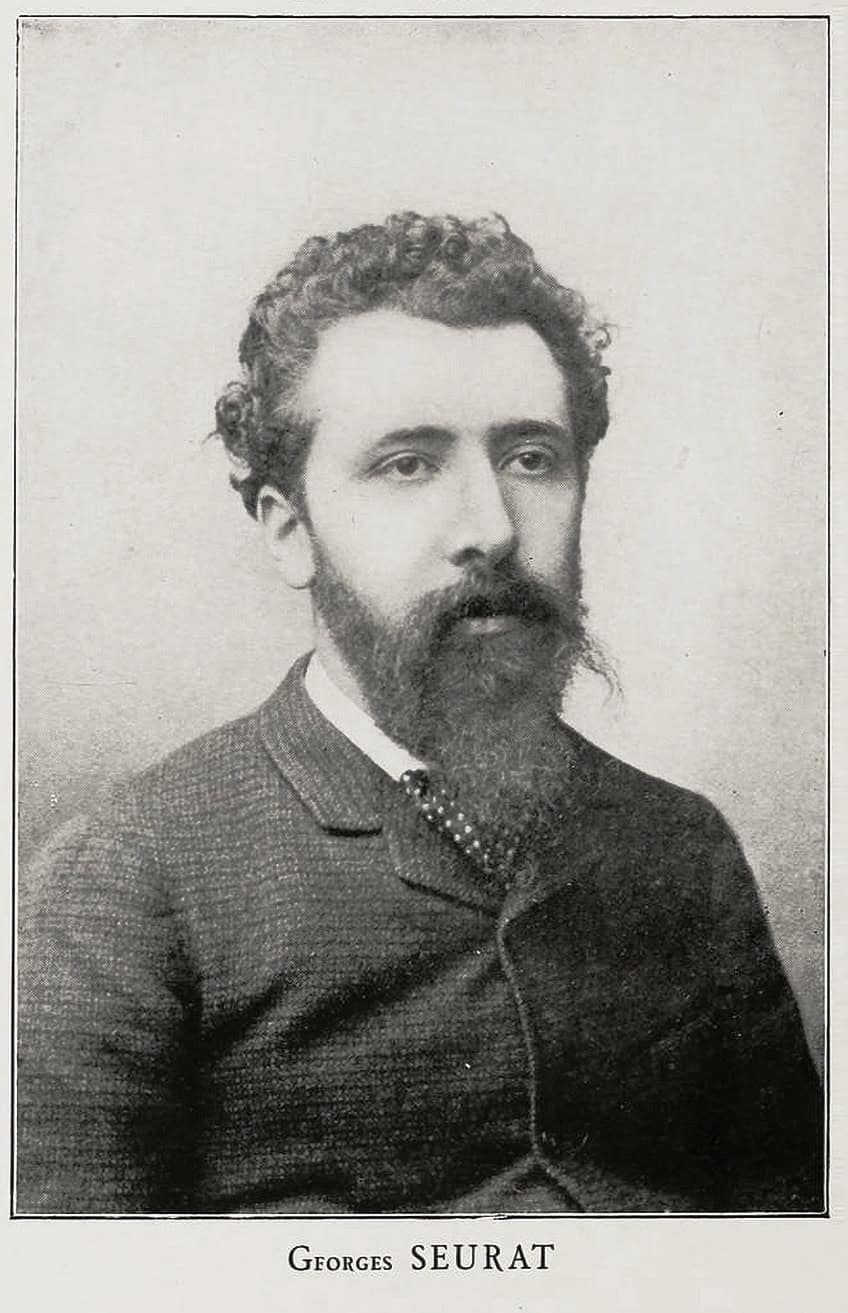
Seurat’s painting emerges from this historical backdrop, reflecting both the structure’s architectural grandeur and its emblematic presence in Parisian culture. Measuring 24 x 15 cm, this oil-on-wood piece is small in size but powerful in its impact, encapsulating the transformative spirit of its era through a modern artistic lens. Seurat’s work sits prominently within the Neo-Impressionist movement, highlighting his innovative approach to color and form. By employing pointillism, Seurat avoided traditional brushwork, instead creating a mosaic of light and color that leaves a lasting impression. Seurat’s The Eiffel Tower not only immortalizes one of the world’s most recognized structures but also exemplifies his dedication to pushing the boundaries of artistic expression through new techniques.
Pointillism and Its Evolution
Georges Seurat pioneered Pointillism, a technique involving the application of small dots of color. This approach was intended to blend visually when viewed from a distance. Seurat’s method was influenced by scientific theories on color and perception, aiming to create vivid, dynamic compositions.
Paul Signac, a contemporary of Seurat, further developed this technique.
Neo-Impressionism emerged, characterized by precise brushwork and an emphasis on light effects. Seurat’s A Sunday Afternoon on the Island of La Grande Jatte exemplifies this style. This technique required meticulous planning and an understanding of color theory to achieve the desired optical effects.
The Eiffel Tower in Art
The Eiffel Tower was completed in 1889 for the Paris World’s Fair, symbolizing industrial innovation. Seurat captured this modern icon in his painting, emphasizing its geometric structure through pointillist dots. Placed within the context of Parisian life and modernity, Seurat’s depiction of the Eiffel Tower showcases the intersection of art, technology, and urban culture. The tower’s construction fascinated artists and writers, inspiring a myriad of creative works. Seurat’s interpretation reflects his vision of blending natural elements with industrial progress. This juxtaposition underscores the significance of the Eiffel Tower in both art history and cultural identity.

Artistic Analysis of The Eiffel Tower
Georges Seurat’s work The Eiffel Tower is a prime example of Neo-Impressionist art. This analysis will delve into Seurat’s use of color theory, his unique interpretation of the landmark, and his distinctive brushwork.
Color Theory and Composition
Seurat employed a meticulous approach to color, using small, distinct dots of pure pigment. This technique, known as Pointillism, creates a vibrant interplay of colors when viewed from a distance. He utilized complementary colors to enhance visual contrast and harmony in the painting. The application of warm hues for the structure and cool tones for the background serves to balance the composition.
By controlling these elements, Seurat achieved a dynamic yet balanced aesthetic.

Seurat’s Interpretation
Seurat’s depiction of the Eiffel Tower is characterized by its simplification and abstraction. He avoided extensive detail, choosing instead to capture the essence and geometric form of the iconic structure. This approach brings attention to the tower’s modernity and engineering marvels of the time. By framing the tower against the Parisian skyline, he emphasizes the juxtaposition between nature and human innovation.
His portrayal reflects the societal fascination with industrial advancement during the late 19th century.
Seurat’s Unique Brushstrokes
Seurat’s technique involved placing tiny dots of paint meticulously across the canvas. This pointillist method creates an optical blending effect, where colors mix in the viewer’s eye rather than on the palette. This method demands precision and patience, resulting in a textured surface that enhances the viewer’s visual experience. The brushstrokes follow a rhythmic pattern, contributing to the sense of structure and coherence within the painting. Through this technique, Seurat adds depth and dimension, engaging the viewer in an interactive observation of color and form.

Impact and Legacy
Georges Seurat’s The Eiffel Tower has left a significant mark on the world of art, particularly within the Neo-Impressionism movement. Seurat’s use of pointillism in this painting highlights the vibrant and intricate details of the tower and its surroundings. This technique adds depth to the cityscape, enhancing its vibrancy and capturing the lively essence of Paris. Housed at the Fine Arts Museums of San Francisco, this artwork is part of a prestigious collection, drawing numerous visitors daily. It stands alongside other notable works, including Sunday Afternoon on the Island of La Grande Jatte and The Circus .
Seurat’s representation of the Eiffel Tower has also contributed to its iconic status, emphasizing the tower’s grandeur during the late 19th century.

The painting offers a unique perspective on the Seine and the bustling life around it, reflecting Paris’s dynamic atmosphere. The Eiffel Tower by Seurat is celebrated particularly in the United States where it continues to inspire contemporary artists and enthusiasts. Its presence in San Francisco further bridges the artistic connections between Paris and American art scenes. Overall, this painting by Seurat serves as a testament to his enduring legacy and profound impact on Impressionism and Neo-Impressionism.
Georges Seurat’s The Eiffel Tower not only captures the essence of a groundbreaking architectural marvel but also exemplifies the artist’s pioneering Pointillist technique. Through his methodical application of color and light, Seurat transforms a symbol of modernity into a vibrant mosaic of visual splendor. The painting stands as a testament to Seurat’s commitment to innovation and his profound influence on the Post-Impressionist movement. The Eiffel Tower remains a celebrated piece in art history, illustrating the harmonious blend of artistic creativity and scientific precision that defined Seurat’s career and left an indelible mark on the evolution of modern art.
Frequently Asked Questions
What artistic techniques did georges seurat employ in his painting of the eiffel tower.
Georges Seurat is famously associated with the technique of Pointillism. In this painting, he used small, distinct dots of color applied in patterns to form an image. This method allows the viewer’s eye to blend the colors from a distance.
What Kind of Materials Is Georges Seurat Known to Have Used in His Paintings?
Georges Seurat primarily used oil paints on canvas. He was meticulous in his choice of pigments, often opting for brighter and more vibrant hues to achieve the desired effect in his Pointillist technique. Additionally, he used a fine brush to apply the individual dots of paint.
How Does Georges Seurat’s Personality Reflect in His Artwork, Including The Eiffel Tower ?
Seurat’s meticulous nature and analytical mind are reflected in his precise and methodical approach to painting. His dedication to scientific principles of color theory and his innovative techniques highlight his commitment to his craft. The Eiffel Tower painting demonstrates his attention to detail and his structured, deliberate style.

Isabella studied at the University of Cape Town in South Africa and graduated with a Bachelor of Arts majoring in English Literature & Language and Psychology. Throughout her undergraduate years, she took Art History as an additional subject and absolutely loved it. Building on from her art history knowledge that began in high school, art has always been a particular area of fascination for her. From learning about artworks previously unknown to her, or sharpening her existing understanding of specific works, the ability to continue learning within this interesting sphere excites her greatly.
Her focal points of interest in art history encompass profiling specific artists and art movements, as it is these areas where she is able to really dig deep into the rich narrative of the art world. Additionally, she particularly enjoys exploring the different artistic styles of the 20 th century, as well as the important impact that female artists have had on the development of art history.
Learn more about Isabella Meyer and the Art in Context Team .
Cite this Article
Isabella, Meyer, ““The Eiffel Tower” by Georges Seurat – Strokes of Brilliance.” Art in Context. June 5, 2024. URL: https://artincontext.org/the-eiffel-tower-by-georges-seurat/
Meyer, I. (2024, 5 June). “The Eiffel Tower” by Georges Seurat – Strokes of Brilliance. Art in Context. https://artincontext.org/the-eiffel-tower-by-georges-seurat/
Meyer, Isabella. ““The Eiffel Tower” by Georges Seurat – Strokes of Brilliance.” Art in Context , June 5, 2024. https://artincontext.org/the-eiffel-tower-by-georges-seurat/ .
Similar Posts
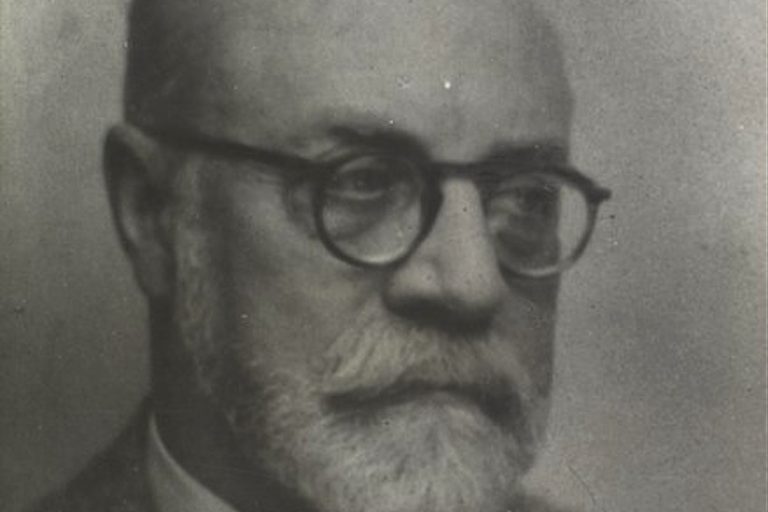
“The Red Studio” by Henri Matisse – A Quick Red Studio Analysis
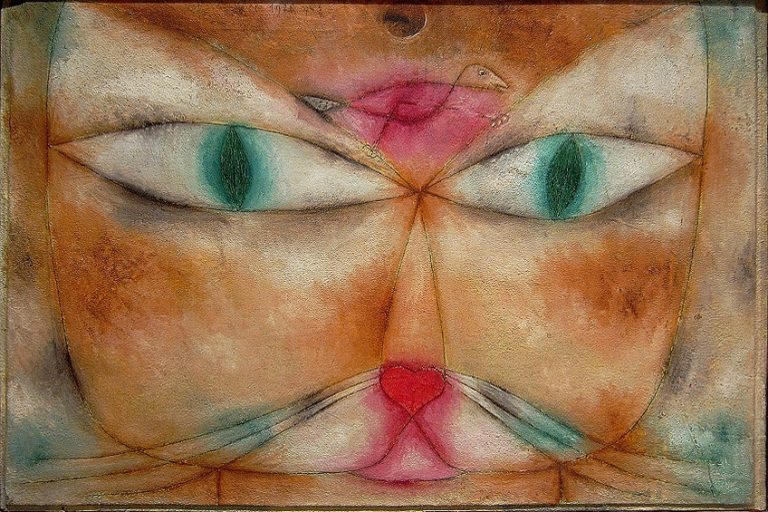
10 Paul Klee Paintings – The Magic of Line and Form
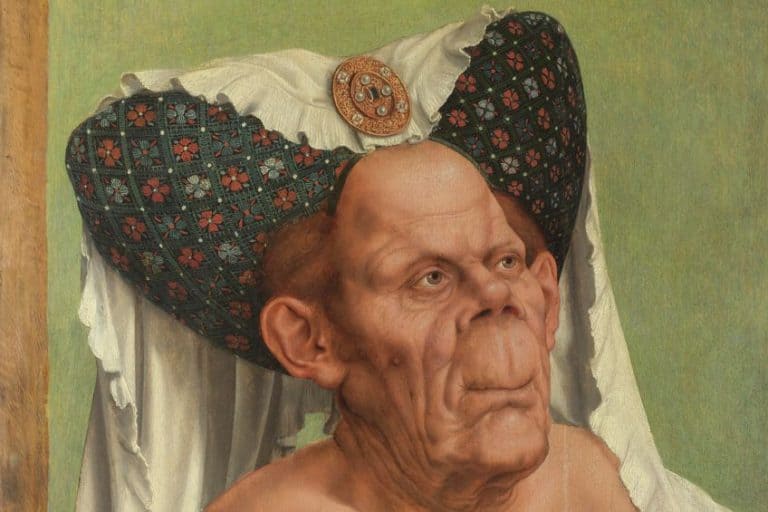
“The Ugly Duchess” by Quinten Massys – An In-Depth Analysis
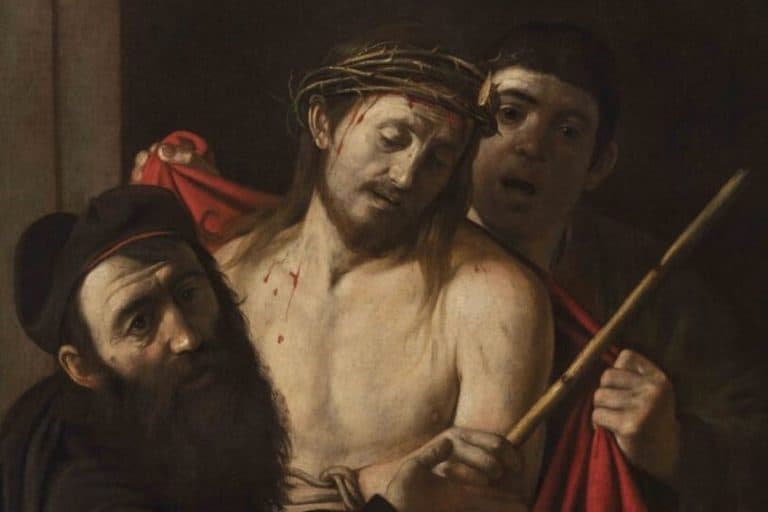
Newly Discovered Caravaggio Painting at the Prado in Madrid

“The Stone Breakers” Gustave Courbet – A History and Analysis

“The Sleep of Reason Produces Monsters” by Goya – A Look
Leave a reply cancel reply.
Your email address will not be published. Required fields are marked *
Save my name, email, and website in this browser for the next time I comment.
The Most Famous Artists and Artworks
Discover the most famous artists, paintings, sculptors…in all of history!

MOST FAMOUS ARTISTS AND ARTWORKS
Discover the most famous artists, paintings, sculptors!

- Art History
- U.S. History
The Eiffel Tower
The Eiffel Tower painting by Georges Seurat, a famous French painter, is arguably one of the most outstanding pieces of history that rock the face of the world today. It is a simple hand-painted piece of art-work that features an artistic impression of the world renowned Eiffel Tower.
Art Techniques
This awe-inspiring art print boasts genius artistic techniques. Since its creation during the neo-impressionist era (1889 to be precise), the finely designed piece of artwork has stunned many with its outstanding portrayal of light, tiny brushstrokes.
The groundbreaking paint utilizes elaborate linear structures and scientifically devised geometric order.
Seurat was known for his genius ways of playing around with various color theories. This is evident in this vividly crafted show of artistic might.
With a deep history behind its exponential rise to fame, The Eiffel Tower continues to reign supreme in the ever-evolving world of art. Its elegant size and top-notch versatility are just but some of the key features behind its popularity.
Newest Additions
- Malala Yousafzai
- Greta Thunberg
- Frederick Douglass
- Wangari Maathai
Copyright © 2020 · Totallyhistory.com · All Rights Reserved. | Terms of Use | Privacy Policy | Contact Us

The Eiffel Tower by Georges Seurat
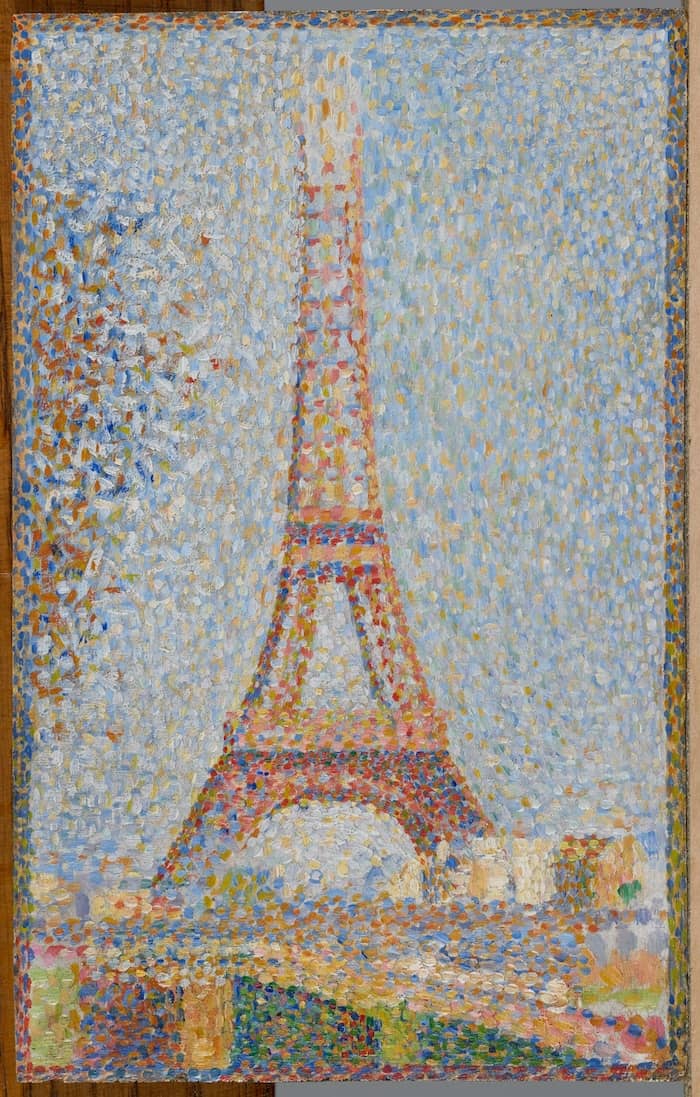
According to Gustave Coquiot, this work was painted in 1890, the year after the tower was opened for the Paris World's Fair-at which it provided the main attraction. Completed on March 31, 1889, the tower is 984 feet tall and is composed of 12,000 metal parts held in place by 2,500,000 rivets.
Impressed by the intricate calculations involved in this piece of architectural engineering, no doubt also indulging his fondness for the vertical, Seurat shows us the tower from across the Pont d'Iena, soaring into a sky spangled with vibrant dots. This is a tribute to "the great lady" who, at the time, made the public uneasy. Two years before its completion a number of writers protested, among them J.-K. Huysmans, who called it "the spire of a junkyard Notre Dame."
Here Seurat's dots are rounded, like so much blue and orange confetti. They are running in every direction, up, and down, making circular swirls and contrapuntal contrasts. The work is fresh, highly colorful, and firmly set against the Paris sky-Seurat's sky.
La Grande Jatte
Bathers at asnières, circus sideshow, young woman powdering herself, the channel of gravelines, petit fort philippe, study for la grande jatte, grandcamp, eevening, a field of alfalfa, saint denis, the channel at gravelines, seascape at port-en-bessin, normandy, la rade de grandcamp, le bec du hoc, grandcamp, the lighthouse at honfleur.
Search FAMSF
Mobile navigation, social sharing.
- Copy Page URL Copied to clipboard!
Eiffel Tower
Georges Seurat
Artwork Viewer
The inventor of the so-called Neo-Impressionist, or pointillist, technique, Seurat used tiny dots of bright, contrasting color to evoke form and light. His technique drew on contemporary theories of visual perception, seeking to give painting a new structure and scientific grounding. Here his subject was the famous tower built by Gustave Eiffel in 1889 for the Universal Exposition in Paris. Seurat portrayed the structure prior to its completion in the summer of 1889. The top, still missing its distinctive crowning platform, seems to dissolve into the sky.
Exhibition History
Bibliography, currently on view, woman holding a swan, mid 4th century bc, composition of right foot, 19th-20th century, a mature man preparing to make love to a young girl, ninth scene from the series handscroll for the sleeve (sode no maki), ca. 1780-1790, new acquisitions, the little eugène de montesquiou-fézensac asleep, 1783, motif pour tenue de reine, 2023, woman's ensemble: dress (a) and bracelet (b), ca. 1920, portrait of bianca degli utili maselli and her children, ca. 1604-5, portrait of a youth through time, 2022.
Sartle requires JavaScript to be enabled in order for you to enjoy its full functionality and user-experience.You can find info on how to enable JavaScript for your browser here .

We do our best to use images that are open source. If you feel we have used an image of yours inappropriately please let us know and we will fix it.
Our writing can be punchy but we do our level best to ensure the material is accurate. If you believe we have made a mistake, please let us know.
If you are planning to see an artwork, please keep in mind that while the art we cover is held in permanent collections, pieces are sometimes removed from display for renovation or traveling exhibitions.
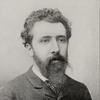
Georges Seurat
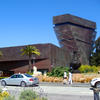
de Young Museum
50 Hagiwara Tea Garden Drive San Francisco, CA United States
More about Eiffel Tower
H: 9 1/2 x W: 6 in.
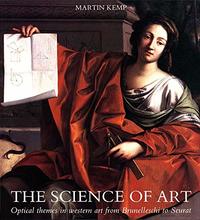
The Science of Art: Optical Themes in Western Art from Brunelleschi to Seurat by Martin Kemp
Buy now on Amazon
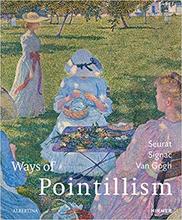
Ways of Pointillism: Seurat, Signac, Van Gogh by Klaus Albrecht Schröder
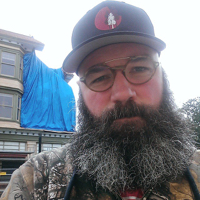
Contributor
Whether or not the world as Georges Seurat saw it was as out of focus as many of his paintings and drawings would suggest is up for debate.
One thing is for sure, his particularly persnickety style of painting drew a (presumably) spotty dividing line between the older Impressionists and those feisty young upstarts known as the Post-Impressionists. La Tour Eiffel , finished just months ahead of the completion of the tower for its 1889 World’s Fair debut, is a quiet riot of devilishly precise dabs of color.
The Seurat dots of La Tour Eiffel are a riot of multicolored confetti, each piece notched in just so in order to complement and modify the dots adjacent. This is Seurat’s thing, painting in a way that allows the viewer’s eyes to blend the myriad colored dots into a unified, vividly colorful image. Seurat called this new technique 'chromoluminarism,' though it is better known as Divisionism. It later became known as Pointillism after the tiny strokes of paint that help create the flickering effect of Seurat’s surfaces.
This flickering effect is most pronounced in La Tour Eiffel . The bright sky shimmers with obsessive flecks of white, gold, and blue. And dead center in the middle of this flickering psychedelia appears a promontory of dazzling dots extending to the top of the painting where it simply dematerializes back into the ether.
After studying and contemplating this painting for a couple weeks, the following conclusions have been drawn: Pointillism isn’t especially funny. Heck, it’s not even particularly cute. Pointillism is serious stuff brought to light by a draftsman from a wealthy family who just so happened to have the mad skill of mixing abstract painting with mathematics to come up with a bit of magic that marked the beginning of a new era in the world of art.
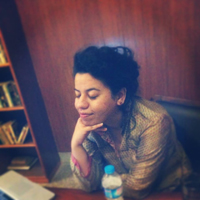
I can’t say I fully agree when critics say Seurat’s Eiffel Tower is a great work of art, but I’ll give the guy credit where credit is due.
I’m sure the Eiffel Tower was a big deal around the time that Seurat painted it and in fact, the Eiffel Tower is STILL a big deal. Seurat painted this about two months before engineer Gustave Eiffel had finished it, and obviously WAY before it became the place to take countless photographs of yourself making out in front of it, people holding up peace signs, people holding up the tower by its tip, amongst many other classic yet cheesy poses, only now boosted in creativity with the invention of the selfie stick.
I still try to figure out what the actual function of the tower was supposed to be, but in spite of its ambiguous purpose, it doesn’t upset me so much to look at it. However, critics and intellectuals at that time were just plain pissed with this massive erection (pun intended) on their precious Parisian landscape. Seurat was obviously dotty about it though (I’ll stop now). Enough to sit down by the quai de Passy during different times of the day and paint this baby.
Now, like I said, its no Sunday Afternoon on the Island of La Grande Jatte, but it’s still a pretty little picture. Even though the tower lives up to its name and does indeed tower over the city, Seurat painted it sweetly on a small canvas. Keeping monumentality out of it, Seurat uses his characteristic technique of painting in dots or points and somehow makes the structure of the tower look a lot lighter, in terms of weight. Again, this doesn’t have to do with the size of the painting but more to do with the way these colored dots look like they just spontaneously ossified into the Eiffel Tower. In that, they look like they could also diffuse any second and the whole picture could go poof! In fact, one of the reasons why Seurat felt an affinity with this modern construction was because he was getting a lot crap at that time for his less than conservative painting technique. Seurat maybe thought, “Us rebels gotta stick together” and went for this.
Ok, so maybe the later critics were onto something when they called it a great piece. Feel free to pick up the $5 fridge magnet version of this if you agree.
Comments (1)

his art is horrible
Where next?
Explore related content
Eiffel Tower
Georges seurat, legion of honor san francisco, ca, united states.
- Title: Eiffel Tower
- Creator: Georges Seurat
- Physical Dimensions: 9 1/2 x 6 in. (24.1 x 15.2 cm)
- Rights: Museum purchase, William H. Noble Bequest Fund
- Medium: Oil on panel
Get the app
Explore museums and play with Art Transfer, Pocket Galleries, Art Selfie, and more

E-tickets are gradually being made available online for visits until early September. Check this page regularly for all the latest updates about the visiting conditions during the Paris 2024 Olympics, and also during the week preceding the opening ceremony (July 18-25).
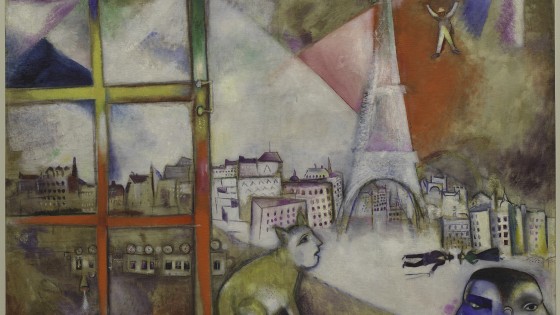
Art and the Eiffel Tower
From the beginning the Tower was an attraction, but in the 1920s it became a symbol of modernity and the avant-garde. Little by little, its image was associated with Paris, until it even became its worldwide symbol.
Poets, painters, singers, choreographers, film directors, and photographers have all paid homage to it.
Painting and the Eiffel Tower
Ahead of their time, painters made the Tower into a favourite subject, and contemporary artists continue to use it as a model.
Georges Seurat painted it in 1888, before it was even finished. Later on, le Douanier Rousseau, Signac, Bonnard, Utrillo, Gromaire, Vuillard, Dufy, and Chagall all celebrated the Tower. From 1910 Robert Delaunay gave it cubist aspects in a whole series of canvas paintings.
A few painters:
- 1888 - Georges Seurat : « La Tour Eiffel » (Fine Arts, Museum of San Francisco).
- 1889 - Jean Beraud : « Entrée de l’Exposition Universelle » (Musée Carnavalet, Paris).
- 1890 - Le Douanier Rousseau : « Moi-même, portrait paysage » (Narodni Galerie, Prague).
- 1899 - Paul Signac : « Seine Grenelle » (Coll. Particulière).
- 1910/1912 - Robert Delaunay : « La Ville de Paris » (MNAM - Centre G. Pompidou, Paris).
- 1911/1912 - Robert Delaunay : « La Tour Rouge » (S.R. Guggenheim Museum, New York).
- 1912 - Romaine Brooks : « Jean Cocteau à l'époque de la grande Roue » (MNAM - Centre G. Pompidou, Paris).
- 1913 - Marc Chagall : « Paris par la fenêtre » (S.R. Guggenheim Museum, New York).
- 1954 - Nicolas de Staël : « La Tour Eiffel » (Musée d'Art moderne, Troyes).
- 1954/1955 - Marc Chagall : « Le Champ de Mars » (Musée Folkwang, Essen).
Also: Raoul Dufy, Gino Severini, Utrillo, Bernard Buffet, Pol Bury, Roger Lersy…

The Eiffel Tower, a muse for the seventh art
Filmed by Louis Lumière from as early as 1897, and present ever since in a considerable number of productions, the Eiffel Tower was all the more tied to the adventure of cinema as Gustave Eiffel contributed as a silent partner to the company created by Léon Gaumont in 1895. During the 20th Century, the Eiffel Tower became the symbol of Paris and of France throughout the world. From the beginnings of cinema to today, its presence has given us somewhere to set the plot, or allowed us to give our works a timeless or romantic edge.
The Tower also inspired poets, writers, and philosophers
Among them can be named Blaise Cendrars, Guillaume Apollinaire, Louis Aragon, Raymond Queneau, Jean Cocteau, Jean Giraudoux, Le Corbusier, François Coppée, Dino Buzzati, and Guy de Maupassant, not to mention Roland Barthes and his magnificent texts (“The Eiffel Tower” - Ed. Delpire - 1964).
A source of inspiration for songs, another tradition is to put on grandiose events at its feet, like that of the 25th September 1962 when Darryl F. Zanuck organised a mind-blowing event for the launch of the film “Le jour le plus long” (“The Longest Day”). Edith Piaf appeared on the 1st floor and sang in front of 25,000 Parisians. Charles Aznavour and Georges Brassens would follow in 1966 to help the campaign against hunger. Jean-Michel Jarre presented the 50th birthday of UNESCO on the 14th July 1995. The “3 Tenors” concert brought together over 200,000 spectators in July 1998 at the foot of the Tower to listen to José Carreras, Placido Domingo and Luciano Pavarotti. Johnny Hallyday broke all the records in June 2000 by uniting 600,000 spectators for a concert and pyrotechnic event.
The Tower is also a privileged place for private concerts and other showcases in the reception room on the 1st floor, such as those of Alanis Morissette, Robbie Williams, Texas, Raphaël, Marc Lavoine, Christophe Maé, Justin Bieber, and VV Brown, as well as Véronique Sanson.
A few songs:
Jacques Hélian : « Paris, mais c’est la Tour Eiffel… »
Charles Trénet : « Y a d’la joie, la Tour Eiffel part en balade… »
Jacques Dutronc : « La Tour Eiffel a froid aux pieds… »
Léo Ferré : « Paris portait sa grande croix… »
Pascal Obispo : « Je suis tombé pour elle… »
- Musical theatre: “Les Mariés de la tour Eiffel” (“The Marriage on the Eiffel Tower”) by Jean Cocteau
- "Silhouette": a work from Estonian composer Arvo Pärt for string orchestra and percussion. As homage to Gustave Eiffel, it was created in 2010.
The Eiffel Tower and Advertising
For many years, the Eiffel Tower has been used in advertising. On the spire of the Tower itself, between 1925 and 1936, “Citroën” was written in luminous letters.
Since then, Air France, La Samaritaine, Sony Ericsson, Yves-Saint-Laurent, Jean-Paul Gaultier, Philips, Nina Ricci, Alain Afflelou, ADP, American Express, Dior, and Givenchy, are among the best known brands to have used it as a reference image.
How to use image of the Eiffel Tower ?
Its most original artistic vocation: pyrotechnics
From as early as 1888, a firework was set off to celebrate the completion of the construction of the monument.
In 1937, for the Exposition des Arts et Techniques, a lighting system was designed by the architect André Granet. Every evening, magnificent fireworks, veritable fountains of fire, were set off from each of the Tower’s three floors.
More recently, the “Countdown to the Year 2000”, a veritable dance of fire and light, broadcast by 250 television channels around the world, fired the planet’s imagination. The event was produced by Groupe F and ECA2.
Lastly, on the 14th July 2009, the traditional pyrotechnics took place on the Tower (and not at the Trocadero, where the firework show to celebrate the Fête Nationale was still put on by the Mayor of Paris) following the theme of its 120th birthday.
- Partager sur X
On the same theme

The Eiffel Tower Laboratory
The Eiffel Tower was supposed to be destroyed only 20 years after its construction. To remedy the situation, Gustave Eiffel had the ingenious idea of crediting it with a scientific purpose – the Tower was saved!
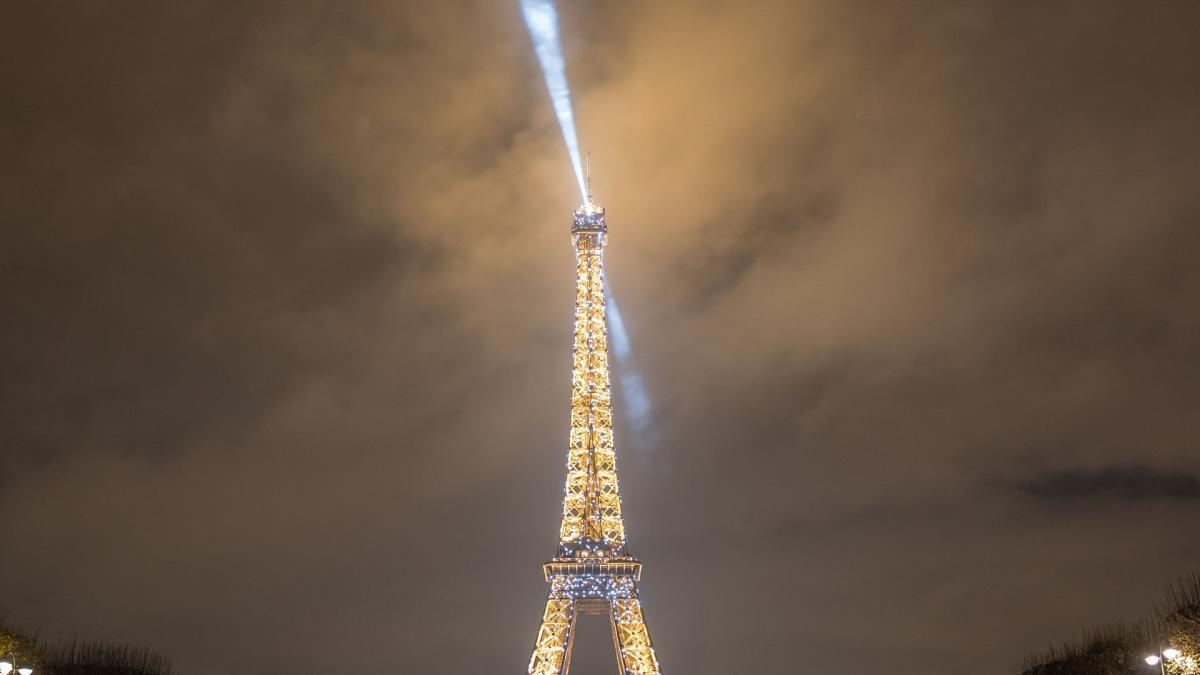
The Eiffel Tower’s Illuminations
Every evening, the Eiffel Tower is adorned with its golden covering and sparkles for 5 minutes every hour on the hour, while its beacon shines over Paris.
Painting the Eiffel Tower
- Prices & Times
- Haut de page

The Eiffel Tower (1889) by Georges Seurat

All Artwork Images

Artwork Information
About the eiffel tower.
The artwork titled “The Eiffel Tower” is a cityscape painting by Georges Seurat, created in 1889. It is executed in oil on wood and measures 24 x 15 cm. Notable for its place within the Neo-Impressionist movement, the painting is currently housed at the Fine Arts Museums of San Francisco in San Francisco, CA, United States.
In the artwork, the Eiffel Tower dominates the composition, standing at the center against a luminescent sky. True to the Neo-Impressionist method, the painting is composed of numerous small brushstrokes that give the impression of a shimmering surface when viewed from a distance. The palette predominantly features a range of blues, with touches of warmer tones that suggest the interplay of light and structure. At the base of the Eiffel Tower, Seurat illustrates a simplified cityscape, with strokes of colors representing buildings and the horizon. The division of color and light captures a moment of tranquility within the bustling city of Paris, creating a sense of atmospheric depth and vibrancy typical of Seurat’s practice.
Other Artwork from Georges Seurat

Port-en-Bessin Outer Harbor at High Tide (1888) by Georges Seurat

A house between trees (1883; France) by Georges Seurat

The Black Horse (1883; France) by Georges Seurat

Alfalfa Fields, Saint-Denis (1885-86) by Georges Seurat

Georges Seurat – Biography and Artwork of the French Painter

A Corner of the Harbor of Honfleur (1886) by Georges Seurat
More neo-impressionism artwork.

Haymakers Resting (1891) by Camille Pissarro

Study for Blue Apple Tree Series (1908) by Piet Mondrian

Meadows at Eragny (1886) by Camille Pissarro

Devotion (1908; Amsterdam, Netherlands) by Piet Mondrian

Avond (Evening); Red Tree (1908) by Piet Mondrian

The Pool of London (1906) by Andre Derain

Molen (Mill); Mill in Sunlight (1908) by Piet Mondrian

Peasant Girl Drinking her Coffee (1881) by Camille Pissarro

Apple-Picking (1886) by Camille Pissarro

View from the Dunes with Beach and Piers (1909) by Piet Mondrian

Snow, Boulevard de Clichy, Paris (1886) by Paul Signac

Pear Trees in Bloom at Eragny, Morning (1886) by Camille Pissarro

- Art Movements

The Eiffel Tower by Georges Seurat

Title of Artwork: “The Eiffel Tower”
Original title: “la tour eiffel”.

Artwork by Georges Seurat
Year created 1889, all about the eiffel tower by georges seurat.
In the midst of Paris’s busy streets, in the year 1889, artist Georges Seurat unveiled his magnificent work, “The Eiffel Tower.” This famous piece of art was produced while the renowned tower was being built, and it has a special place in the annals of art. Seurat’s “The Eiffel Tower” is a well-known work of art thanks to his exacting technique, original use of pointillism, and ability to capture the essence of this engineering marvel.
Georges Seurat, a pioneer of the pointillist movement, used countless tiny dots of paint to create his masterpieces. Seurat painstakingly placed each dot to create a seamless image with an eye for colour theory and scientific accuracy. This method is best demonstrated in “The Eiffel Tower,” where Seurat expertly captures the interaction of light and shadow on the tower’s intricate iron structure. The meticulously placed dots give the painting a sense of depth and luminosity, as well as a distinct vibrancy and energy.
Seurat’s portrayal of the Eiffel Tower captures the spirit of the era in addition to his technical mastery. The tower, which was finished in time for the 1889 Exposition Universelle, symbolised the invention and development of the time. In Seurat’s depiction, the tower stands out dramatically against the backdrop of Paris, evoking the grandeur and ambition that went into its design. Seurat conveys the architectural beauty of the building as well as the era’s industrial spirit by using pointillism to capture the iron lattice and intricate details.
Related Posts

Empire of Light: Exploring the Mystique and Magic of René Magritte’s Iconic Painting

Suzuki Hiroshima: A Masterpiece by Jean Tinguely

Top Street Art Spots in London

All Hidden Symbols & Meanings In Picasso’s Guernica
Seurat’s mastery of composition is also evident in “The Eiffel Tower”. The tower occupies the centre of the painting’s canvas, surrounded by the park’s lush vegetation and the animated figures of people taking in the view. The harmony and balance in Seurat’s composition help to focus the viewer’s attention on the main feature while also giving a glimpse of the bustling life that surrounds the monument.
Additionally, “The Eiffel Tower” marks a turning point in art history because Seurat’s avant-garde approach and portrayal of modernity paved the way for later movements in the arts. His meticulous attention to detail and careful dot placement, which are hallmarks of his pointillist style, had a major impact on later artists and helped post-impressionism and neo-impressionism to emerge.
Despite its age, “The Eiffel Tower” still draws viewers in with its stunning appearance and interesting past. The artwork serves as evidence of Seurat’s artistic genius, demonstrating his capacity to capture not only the external features of a scene but also its atmosphere and spirit. By taking viewers back to the 19th century and immersing them in the allure and wonder of the Eiffel Tower’s construction, it acts as a visual time capsule.
Finally, “The Eiffel Tower” by Georges Seurat is a magnificent work of art that perfectly captures the spirit of this engineering marvel. Seurat skillfully captures the play of light and shadow, the majesty of the tower, and the vibrant life around it using his unique pointillist technique. The painting not only captures the mood of the era, but also an important turning point in the development of art. It continues to enthral and inspire viewers today, serving as a monument to Seurat’s artistic brilliance and inviting us to appreciate the beauty of both the iconic building and the artist’s distinctive vision.


Oh hi there 👋 It’s nice to meet you.
Sign up to receive awesome content in your inbox from us.
We don’t spam!
Check your inbox or spam folder to confirm your subscription.
All About The Passage Boat by Aelbert Cuyp
Unashamed nudity, ‘ballsy’ paintwork, creative flair.
Official Creative Flair Account

The world of art is filled with masterpieces that evoke powerful emotions and provoke...

"Suzuki Hiroshima" is an iconic artwork created in 1963 by the Swiss artist Jean...

1. Camden - The Eclectic Hub of Creativity Camden beautifully fuses diverse cultures into...

Pablo Picasso’s Guernica is filled with intricate imagery and hidden symbolism, and is considered...

Unashamed Nudity, 'Ballsy' Paintwork

A Roux Painting

Van Gogh’s “Starry Night”: Symbols, Techniques, and Impact

20 Best Methods for Becoming Cultured and Enjoying the Finer Things in Life

All About Henry Ford Hospital (The Flying Bed) by Frida Kahlo

The Guitar Lesson by Balthus: Exploring Themes, Symbolism, and Controversy

Johannes Vermeer
Subscribe to our newsletter.
Sign Up for our Newsletter
Most popular.

Rare Teenage Photos Surface of Banksy Before His Rise to Fame

The Art of Royalty: Analyzing the New Portrait of King Charles III & WHY IT’S ACTUALLY GOOD

10 Optical Illusions In Famous Works Of Art

The Mystical Meaning Behind George Roux’s “Spirit, 1885”

Art Workshops for Stress

Drawing Textures and Patterns

Ivan Aivazovsky: The Master of Marine Art

© 2024 Creative Flair Blog
Navigate Site
- Main Website
Welcome Back!
Login to your account below
Remember Me
Create New Account!
Fill the forms below to register
Retrieve your password
Please enter your username or email address to reset your password.
Are you sure want to unlock this post?
Are you sure want to cancel subscription.

- All artworks
- Marketplace
- PRO atrworks
- Digital copies
- My artworks
- VENDRE UNE ŒUVRE
- Tous les artistes
- PRO artists
- Modern artists
- Old masters
- Order an artwork
- Arthive for artists
- Ajouter un artiste
- All museums and galleries
- All museums
- All galleries
- Arthive for galleries
- My museums and galleries
- Toutes les expositions
- Mes expositions
- Add museum/gallery
- Ajouter une exposition
- Nouveautés de l'art
- Encyclopédie
- Connaissances
- My publications
- Ajouter une publication
- All products and prices
- Websites for Artists
- Websites for Galleries
- PRO account
- Applications mobiles
- Collections
- Reference book
- Collectionneurs
- To art lovers
- À propos du projet
- Questions fréquentes
- Postes à pourvoir
- Language: français
- Add artwork
La tour Eiffel. Paris
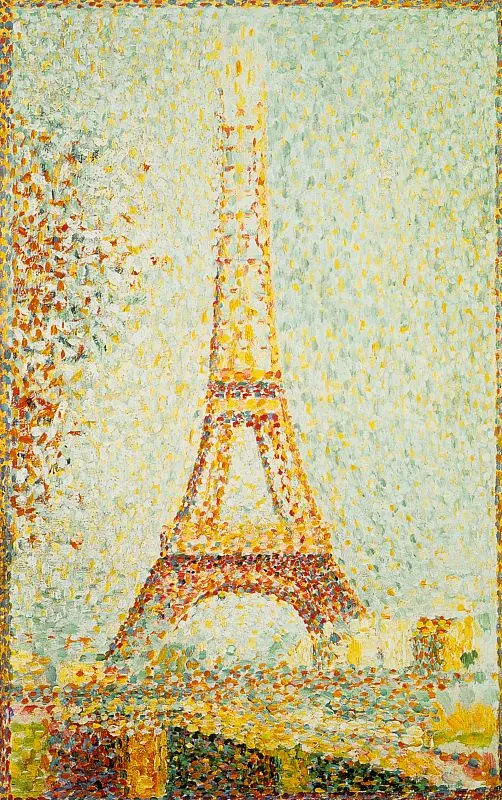
Descriptif de la toile «La tour Eiffel. Paris»
- Politique de confidentialité
- Aide et FAQ
- Publicité dans Artchive
- For museums and galleries
- Utilisateurs
- Create a site of an artist or a gallery.
- Applications mobiles pour les artistes
- Applications mobiles pour les galeries, musées et projets d'exposition
- Toutes les application d'Artchive
- Page sur Medium
- Bot pour Telegram
- All Artists
- Curated Highlights
- Artistic Movements
- Anniversaries
- All Partners
- Reuters Pictures Archive
- Lucian Freud
- GEO Image Collection
- Case Studies
- About Bridgeman Images
- Our Services
- Our Solutions
- Licensing and Copyright
- Meet the Team
- Studio Home
- Studio Artists
Your selection
Leave the work to our dedicated Account Managers.
Search our collection by uploading an image.
Drag & drop an image.
This search will return exact matches only. For best results: Please note that only low-res files should be uploaded. Any images with overlay of text may not produce accurate results. Details of larger images will search for their corresponding detail.
Drag file here
Processing search results
Waiting for update..
Search by Hex
Trending Colours
B&W images only
Dominant colours only
Searching for a particular field
Contact us for further help
High res file dimension, search for more high res images or videos, the eiffel tower, 1889 (oil on canvas), by george seurat.
Similar Images

Almost there… Our AI is finding the best matches
Art. culture. history..
We partner with the world's leading museums, galleries and artists, so you have access to the highest-quality imagery.

Simple. Fast. Reliable.
Our teams can help you find the perfect content and take care of all of the copyright and licensing requirements.

Discover millions of images and videos for your creative projects.
- News & Case Studies
- Sign Up to our Newsletter
Bridgeman Images 77 Sands Street, 6th Floor Brooklyn, NY 11201 United States
T: +1 212 828 1238
- Terms and conditions
- Privacy policy
- Service Agreement
- Restrictions of use
- Change your cookie preferences
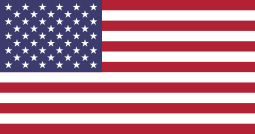
- country-redirect#process" data-lang-replace="fr|en-US" class="nav-item">

© Copyright 2024 Bridgeman Art Library Limited. Registered in England and Wales as company number 01056394.
Category : Eiffel Tower by Georges Seurat

Media in category "Eiffel Tower by Georges Seurat"
The following 3 files are in this category, out of 3 total.

- 1889 paintings
- French paintings in the California Palace of the Legion of Honor
- Eiffel Tower during 1889 Exposition
- Pointillistic paintings by Georges Seurat
- European paintings in the California Palace of the Legion of Honor by title
- Paintings of the Eiffel Tower
- Paintings by Georges Seurat by title
- 1889 paintings by Georges Seurat
- Artworks with known accession number
- Artworks with Wikidata item
- Uses of Wikidata Infobox
- Individual painting categories
Navigation menu
Beauty or Beast?
Georges Seurat was not the first, nor was he the last, painter to choose the Eiffel Tower as his subject. In fact, since its unveiling in 1889, the Tower--a symbol of modernity and the avant-garde, has captivated and inspired poets, film-makers, photographers and painters. "Its abstract qualities, without practical purpose in themselves, and the purity of its design, made it a subject for the many forms of artistic expression of the city and country which had created it" (The official site of the Eiffel Tower). The Tower has been captured in photographic realism, impressionism and abstract cubism-take a look at this site for an interesting look at the Tower as seen through the eyes of artists. Proudly standing 312.27meters high, "piercing the architectural landscape of Paris" (The official site of the Eiffel Tower), there was simply no escaping the Eiffel Tower; it was the expression of the future in material form. Naturally it immediately stirred up controversy, giving form to modern Paris� "division between architects and engineers, between art and science" (The official site of the Eiffel Tower). The uproar over the Tower began in early 1886, when construction work had just barely begun, with pamphlets and articles; but the tumult culminated on February 14 1887, with the Artists' Protest. The letter, addressed to the World's Fair's director of works, Monsieur Alphand, was published in the newspaper Le Temps and signed by "several big names from the world of literature and the arts" (The official site of the Eiffel Tower). And boy, these guys did not hold back, the Tower was called a "tragic street lamp", a confused and deformed "gymnasium apparatus", and was accused of having a shape "like a factory chimney" (The official site of the Eiffel Tower). It is around this time that Georges Seurat begins to paint the Tower, but looking at his painting one does not see a "belfry skeleton" (The official site of the Eiffel Tower) but rather a synthesis of science and art, a beautiful sculpture for the masses.
It seems that everyone agreed with Seurat--the Tower received two million visitors during the World's Fair of 1889. Unlike the Louvre and Versailles which stood as reminders of past royalty, the Arc de Triomphe which symbolized the Empire, or Notre-Dame which was a monument of religion, "the Eiffel Tower is not a monument to anything or to anybody" (Thompson 1138) making it something that anyone can appreciate and enjoy. Confronted with the finished product and the approval of the masses, the Towers detractors were silenced for good. However it wasn�t just the 1889 fairgoers who flocked to the Tower, since its opening the Tower has received over 236,445,812 visitors, and has become the international symbol of Europe.
Fact Sheet:
Date of birth: March 31, 1889, built for the Universal Exhibition in celebration of the French Revolution. Age: 119 years Contractor: Gustave Eiffel & Cie Engineers: Maurice Koechlin & Emile Nouguier Architect: Stephen Sauvestre Studies: Begun in 1884 Construction: 1887 to 1889 (2 years, 2 months and 5 days) Workmen: 50 engineers, designers produced 5,300 "blueprints" 100 ironworkers produced the 18,038 individual parts 121 men working the construction site Composition: 18,038 pieces, 2,500,000 rivets Weight of the metal structure: 7,300 tons Total weight: 10,100 tons The Eiffel Tower is relatively lightweight, creating a force of only 4.5kg/cm2 on the foundation. If the Tower was placed in an air cylinder, its weight would not be more than that of the air cylinder. Height: 1889 (height with flag): 312.27m 2000 (height with antenna): 324.00m Until the construction of the Chrysler Building in 1930 by William Van Allen, architect, the Eiffel Tower was the tallest building in the world. Coordinates : Latitude : 48� 51' 32" North Longitude : 002� 17' 45" East Numbers of visitors up to December 31, 2007: 236,445,812 Distinctive feature: recognizable throughout the entire world Number of steps: 1665 Owner: City of Paris
- Recent Photos
- The Commons
- Flickr Galleries
- Camera Finder
- Flickr Blog
- The Print Shop
- Prints & Wall Art
- Photo Books
- Stats Dashboard
- Get Auto-Uploadr

Georges Seurat: 1890 La tour Eiffel inachevée
San francisco, fine arts museum.
Subscribe to our newsletter and get 5% off your first order Muzéo
Receive our exclusive offers, inspiring and exciting artistic content, and some surprises.
We do not share your email address and you can unsubscribe at any time.
To the right : Work or leisure - Iryna Kuznetsova (Iridi)
Shop art print and framed art La Tour Eiffel by Georges Seurat
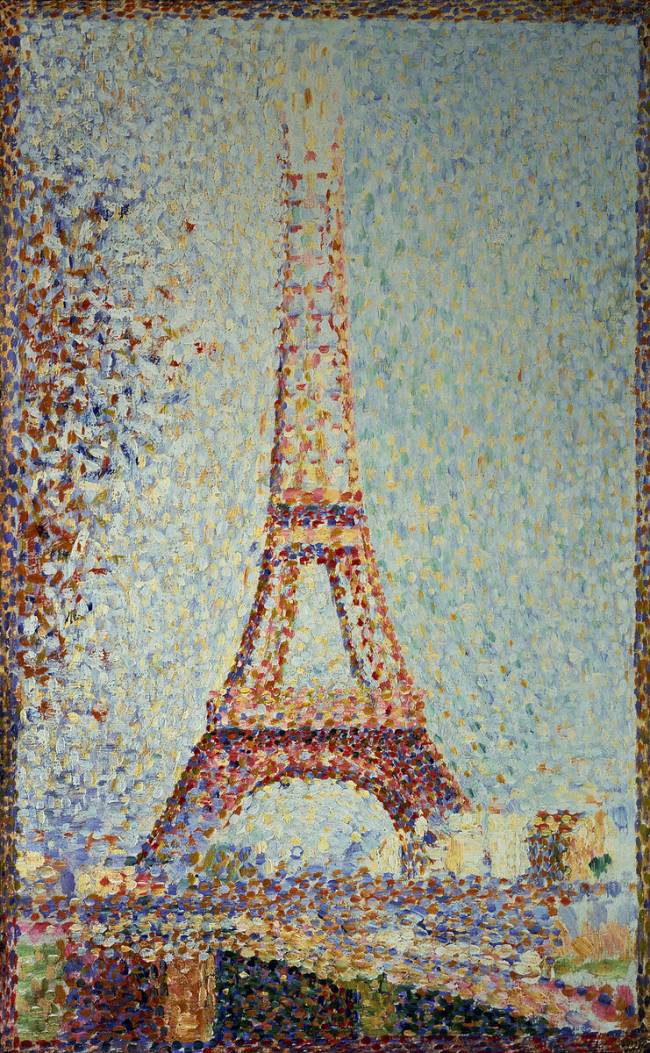
Customise Your art print La Tour Eiffel OF Georges Seurat
Our recommendation for la tour eiffel by georges seurat, la tour eiffel, georges seurat's la tour eiffel: an emblematic work of pointillism.
The Tableau La Tour Eiffel by Georges Seurat is one of the most famous and emblematic works of the artistic movement of pointillism. This masterpiece was created in 1889 by the French painter, who captured the very essence of the tower, the symbol of Paris and France. In this article, we take a look at the history and characteristics of this major work of fine art.
A painting at the heart of the 1889 Universal Exhibition
Georges Seurat completed his painting The Eiffel Tower in 1889, the year of the Universal Exhibition in Paris. The purpose of this exhibition was to celebrate the centenary of the French Revolution and to showcase the industrial and technological advances of the time. The Eiffel Tower, built for the occasion by Gustave Eiffel, was one of the main attractions of the event and symbolised progress and modernity.
Thus, this painting by Seurat represents not only an emblematic monument of the French capital, but also a historical testimony to a key moment in the history of France and modern art.
The characteristics of pointillism in Georges Seurat's La Tour Eiffel
Georges Seurat is considered one of the founders of pointillism, an artistic movement that followed on from Impressionism and is characterised by the use of small touches of paint juxtaposed to create an overall impression. The painting The Eiffel Tower is a perfect example of this innovative technique:
The precision of the dots
In this painting, Georges Seurat used tiny dots of colour to represent the various elements of the scene: the Eiffel Tower itself, the sky, the clouds, the trees and the figures. This precision gives the work great visual richness and allows the viewer to fully appreciate the complexity of the composition.
Chromatic harmony
Pointillism is based on the idea that the human eye can blend colours when they are placed side by side, creating visual harmony. In the painting The Eiffel Tower, Georges Seurat used a wide range of colours, including warm tones (reds, oranges, yellows) and cool tones (blues, greens), to bring his composition to life. As a result, the whole is very harmonious and pleasing to the eye.
Luminosity and depth
Thanks to his mastery of pointillism, Georges Seurat was able to play with light and depth to give his painting a striking three-dimensional aspect. The sunlit areas of the Eiffel Tower contrast with the shaded parts, reinforcing the impression of volume and realism.
Georges Seurat's painting The Eiffel Tower: a must-see work in the museum
Today, Georges Seurat's painting La Tour Eiffel is considered to be one of the must-see masterpieces on a visit to the musée des beaux-arts . This fascinating work not only allows you to discover the artistic world of pointillism, but also to plunge into the history of Paris and France at the end of the 19th century.
- The place of the Eiffel Tower in art: The Parisian monument has inspired many artists since it was built in 1889. Georges Seurat's painting is just one example of the influence the Eiffel Tower has had on French art and culture.
- The comparative study of other paintings: To gain a better understanding of Seurat's work and the pointillism movement, it may be interesting to compare this painting with other works in the same genre by contemporary painters such as Paul Signac or Vincent van Gogh.
- The historical context: Finally, to understand the full significance of this painting, it is essential to look back at the historical context of the time, marked by the Industrial Revolution, the Universal Exhibition of 1889 and the social and cultural upheavals that ensued.
This artwork is a painting from the modern period. It belongs to the pointillism style.
Georges Seurat
Explore the work of georges seurat, you may also like.

Nighthawks Edward Hopper
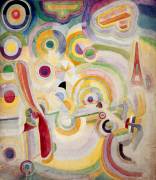
Hommage to Blériot Robert Delaunay

Vue de toits (Effet de neige), dit... Gustave Caillebotte
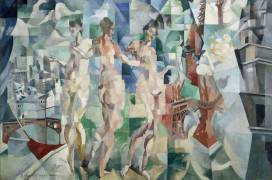
The city of Paris Robert Delaunay
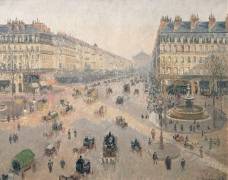
Avenue de l'Opéra, soleil, matinée... Camille Pissarro
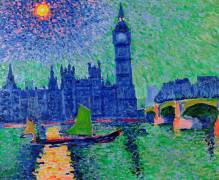
Big Ben, 1906 André Derain
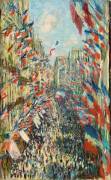
La rue Montorgueil, à Paris. Fête... Claude Monet
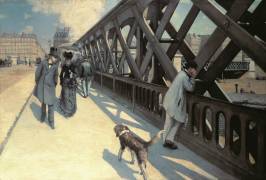
Le Pont de L'Europe Gustave Caillebotte

Boulevard Poissonnière in the rain Jean Béraud
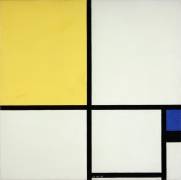
Composition bleu et jaune Piet Mondrian
Other artworks in the same colors.

Fragment de frise décorant le... Alfons Mucha
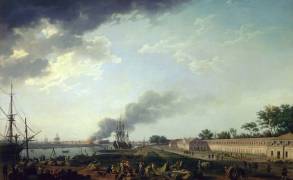
Vue du port de Rochefort Joseph Vernet
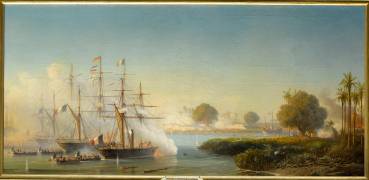
Episode de l'expédition de... Antoine Léon Morel-Fatio
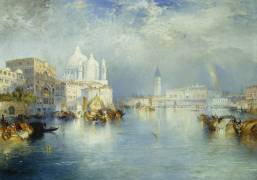
Grand Canal, Venice Thomas Moran

Illustrations of the Book of Job William Blake
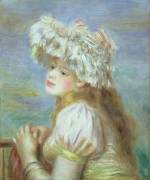
Jeune fille à la coiffe de dentelle Auguste Renoir
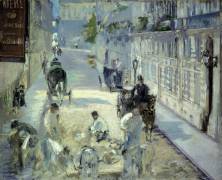
Les paveurs Rue Mosnier Edouard Manet
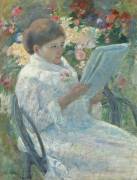
On a Balcony Mary Cassatt

Rainbow at the Port of La Rochelle Paul Signac

Upward Trend Emily Carr
Other similar artworks.
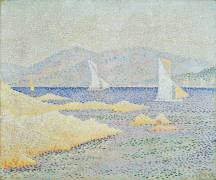
Coast Scene Paul Signac
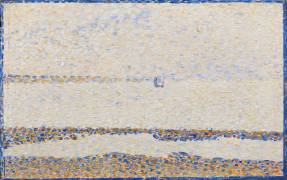
Beach at Gravelines, 1890 (oil on... Georges Seurat
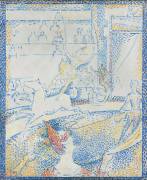
Esquisse pour "Le Cirque" Georges Seurat

Gray Weather Georges Seurat

Histoire ancienne jusqu'à César et... Jean Fouquet

Page enluminée : le couronnement... Jean Fouquet
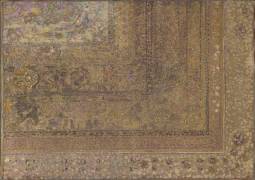
Projet de tapis de prière Odilon Redon
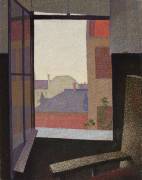
View from the Window Arthur Segal

Wallpaper Frieze from the Consulate... anonymous
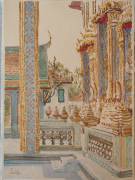
Wat Ratchabophit Wilson Clive
- Art for business
- Guide to print types
- Production times
- Packing & Shipping
- Hang your artprint
- My 5% newsletter sign-up coupon

BACK TO {ARTIST_NAME}
Additional Photos Request
Related Works
GET IN TOUCH
Mon - Sat: 11 - 5
Sunday by appointment
QUICK LINKS
PALM BEACH GARDENS FLORIDA, JUPITER FLORIDA, JUNO BEACH FLORIDA, TEQUESTA FLORIDA, WEST PALM BEACH, NORTH PALM BEACH, PALM BEACH, DELRAY BEACH, BOYNTON BEACH, WELLINGTON FLORIDA, BOCA RATON
myddoa.com, an art history website
Georges Seurat
“the seine from la grande jatte” by georges seurat.
“The Seine from La Grande Jatte” This oil on canvas piece from 1888, titled “The Seine from La Grande Jatte”, […]
Share this:
- Click to share on Twitter (Opens in new window)
- Click to share on Facebook (Opens in new window)
- Click to share on Pinterest (Opens in new window)
- Click to email a link to a friend (Opens in new window)
- Click to print (Opens in new window)
- Click to share on Reddit (Opens in new window)
- Click to share on Tumblr (Opens in new window)
“La Tour Eiffel” by Georges Seurat
“La Tour Eiffel” This oil on wood panel painting from 1889 is by the French Post-Impressionist artist, Georges Seurat, and

IMAGES
VIDEO
COMMENTS
modifier - modifier le code - modifier Wikidata La Tour Eiffel est un tableau réalisé par le peintre Georges Seurat en 1889 représentant la tour Eiffel . Il est conservé au musée des beaux-arts de San Francisco . Cette œuvre est représentative du mouvement pointilliste . Références [modifier | modifier le code] ↑ « Georges Seurat: 1890 La tour Eiffel inachevée », sur Flickr ...
The Eiffel Tower (1889), Georges Seurat; Georges Seurat, Public domain, via Wikimedia Commons Artistic Analysis of The Eiffel Tower. Georges Seurat's work The Eiffel Tower is a prime example of Neo-Impressionist art. This analysis will delve into Seurat's use of color theory, his unique interpretation of the landmark, and his distinctive brushwork.
Georges Seurat: Year: 1889: Medium: Oil on canvas: Location: Fine Arts Museums of San Francisco, CA, USA: Dimensions: 9.5 x 6 in 24 x 15 cm: The Eiffel Tower painting by Georges Seurat, a famous French painter, is arguably one of the most outstanding pieces of history that rock the face of the world today. It is a simple hand-painted piece of ...
The Eiffel Tower by Georges Seurat. According to Gustave Coquiot, this work was painted in 1890, the year after the tower was opened for the Paris World's Fair-at which it provided the main attraction. Completed on March 31, 1889, the tower is 984 feet tall and is composed of 12,000 metal parts held in place by 2,500,000 rivets.
Here his subject was the famous tower built by Gustave Eiffel in 1889 for the Universal Exposition in Paris. Seurat portrayed the structure prior to its completion in the summer of 1889. ... Seurat, exh. cat., Kunsthaus Zürich and Schirn Kunsthalle Frankfurt, Ostfildern, 2009, p. 39, no. 31, repr. L.M., "Georges Seurat. Figure dans l ...
La Tour Eiffel, finished just months ahead of the completion of the tower for its 1889 World's Fair debut, is a quiet riot of devilishly precise dabs of color. The Seurat dots of La Tour Eiffel are a riot of multicolored confetti, each piece notched in just so in order to complement and modify the dots adjacent. This is Seurat's thing ...
The Eiffel Tower had been built continuously by 300 workers over a period of two years and two months. An amazing action took place in front of the Parisians: more than 18 thousand structural parts were gradually delivered to the construction site, brought higher and higher on cranes and elevators, until the entire ten-ton structure rose above ...
Details. Title: Eiffel Tower. Creator: Georges Seurat. Physical Dimensions: 9 1/2 x 6 in. (24.1 x 15.2 cm) Rights: Museum purchase, William H. Noble Bequest Fund. Medium: Oil on panel. Explore museums and play with Art Transfer, Pocket Galleries, Art Selfie, and more. Georges Seurat France Modern art Neo-Impressionism Oil paint Paris Tower.
1888 - Georges Seurat: « La Tour Eiffel » (Fine Arts, Museum of San Francisco). 1889 - Jean Beraud : « Entrée de l'Exposition Universelle » (Musée Carnavalet, Paris). 1890 - Le Douanier Rousseau : « Moi-même, portrait paysage » (Narodni Galerie, Prague).
This oil on wood panel painting from 1889 is by the French Post-Impressionist artist, Georges Seurat, and is titled "La Tour Eiffel (The Eiffel Tower)". Seurat painted this the same year that the Eiffel Tower was erected as the grand entrance to the 1889 World's Fair. This painting is actually rather small, at just 6 x 9½ inches.
About The Eiffel Tower. The artwork titled "The Eiffel Tower" is a cityscape painting by Georges Seurat, created in 1889. It is executed in oil on wood and measures 24 x 15 cm. Notable for its place within the Neo-Impressionist movement, the painting is currently housed at the Fine Arts Museums of San Francisco in San Francisco, CA, United ...
In the midst of Paris's busy streets, in the year 1889, artist Georges Seurat unveiled his magnificent work, "The Eiffel Tower.". This famous piece of art was produced while the renowned tower was being built, and it has a special place in the annals of art. Seurat's "The Eiffel Tower" is a well-known work of art thanks to his ...
Title of Artwork: "The Eiffel Tower"Original Title: "La tour Eiffel"Artwork by Georges SeuratYear Created 1889All About The Eiffel Tower by Georges SeuratIn the midst of Paris's busy streets, in the year 1889, artist Georges Seurat unveiled his magnificent work, "The Eiffel Tower." This famous piece of art was produced while the renowned tower was being
Date de création: 1889. Taille: 24×15 cm. Œuvre dans les sélections: 28 selections. Descriptif de la toile «La tour Eiffel. Paris». Par conséquent, bien sûr, Seurat n'a pas été invité aux pavillons de l'Exposition universelle en tant que participant - il est resté de l'autre côté de la tour et a peint un whopper en métal de dix ...
Download stock image by Georges Pierre Seurat - The Eiffel Tower, 1889 - High quality fine art images, pictures, photos and videos from Bridgeman Images. Experts in licensing art, culture and history images. ... The Eiffel Tower, 1889 (oil on canvas) Auto-translated text View Original Source Artist Seurat, Georges Pierre (1859-91) / French ...
Media in category "Eiffel Tower by Georges Seurat". The following 3 files are in this category, out of 3 total. Georges Seurat - Tour Eiffel.jpg 688 × 1,100; 271 KB. Georges Seurat 043.jpg 1,955 × 3,071; 931 KB. Georges Seurat - La Tour Eiffel (ca. 1889).jpg 2,208 × 3,492; 4.56 MB.
1889 (height with flag): 312.27m. 2000 (height with antenna): 324.00m. Until the construction of the Chrysler Building in 1930 by William Van Allen, architect, the Eiffel Tower was the tallest building in the world. Coordinates : Latitude : 48º 51' 32" North. Longitude : 002º 17' 45" East. Numbers of visitors up to December 31, 2007: 236,445,812.
San Francisco, Fine Arts Museum
Georges Seurat's La Tour Eiffel: an emblematic work of pointillism. The Tableau La Tour Eiffel by Georges Seurat is one of the most famous and emblematic works of the artistic movement of pointillism. This masterpiece was created in 1889 by the French painter, who captured the very essence of the tower, the symbol of Paris and France.
The Eiffel Tower (La tour Eiffel) c. 1889 Georges Seurat by Stephen Hansen
"La Tour Eiffel", Georges Seurat, 1889, oil on wood panel. Image Source " La Tour Eiffel" This oil on wood panel painting from 1889 is by the French Post-Impressionist artist, Georges Seurat, and is titled "La Tour Eiffel (The Eiffel Tower)".Seurat painted this the same year that the Eiffel Tower was erected as the grand entrance to the 1889 World's Fair.
Download scientific diagram | -Georges Seurat, La tour Eiffel (1889) from publication: Diferenças de acuidade visual por três métodos psicofísicos na Tabela ETDRS | Visual | ResearchGate, the ...